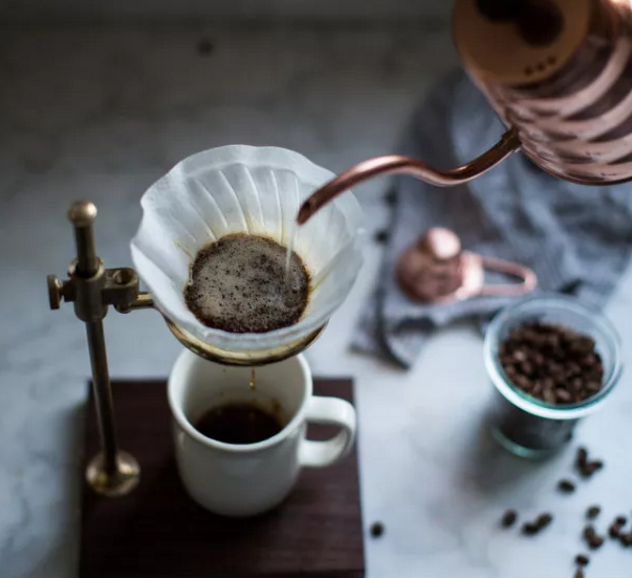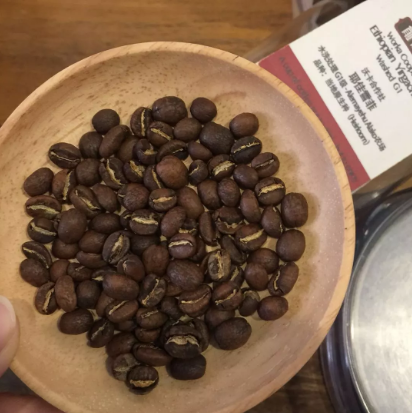Water | effect of different water quality on the taste of coffee
As we all know, the water used for brewing has to be filtered by carbon and has no peculiar smell, but this is only the basic requirement of high-quality brewing water. In order to get better coffee (or tea, Espresso), the water used should be neutral pH, with a certain hardness, alkali content, and total dissolved solid content (TDS).
The following are hydrochemical terms related to coffee making.
Total dissolved solids (TDS): the sum of chemicals less than 2 microns distributed in water, in units of mg/L or ppm.
Hardness: mainly used to measure calcium and magnesium ions soluble in water, although there are other minerals in the water. Unit of measure mg/L or Gerring per gallon.
PH value: the acidity and basicity of the solution is measured by hydrogen ion activity.
Acidity: the pH value of the solution is less than 7.0.
Alkaline: the pH value of the solution is higher than 7.0.
Alkali content: the buffer capacity of the solution to acid, in unit of mg/L.
There are many units of measurement to describe the chemical parameters of water. For simplicity, the author chooses mg/L (mg per liter, or 1/1000000) as the unit of measurement of TDS, hardness and alkali content.
Standard for flushing and cooking water

It is recommended to use water that meets the following criteria for brewing coffee, tea, and Italian concentrate.
Soluble substances in water (TDS)
Total dissolved solids (Total dissolved solids, abbreviated TDS), also known as total soluble solids, is measured in grams per ton. It indicates that 1 ton of water contains the gram weight of soluble solids, while 1 ton of water contains 1 g of soluble solids, that is, 1 part per million. The percentage of weight, abbreviated as ppm,ppm, is generally used as a unit of measurement of TDS.
The higher the TDS value, the more dissolved matter the water contains. Total dissolved solid refers to the total amount of all solutes in water, including both inorganic and organic matter. Because the organic matter and molecular inorganic substances contained in natural water can generally not be considered, the salt content is generally called total dissolved solid. However, TDS can not effectively reflect the water quality in specific water. For example, electrolytic water, due to the significant increase of charged ions in the electrolyzed water, the corresponding conductivity increases abnormally.
To put it simply, the higher the ppm value, the more soluble matter in the water, so the lower the extraction rate of coffee liquid will be; while the lower the ppm value, the less soluble matter in the water, so the higher the extraction rate of coffee.
Different water may have the same ppm value, but the composition of soluble solids may not be the same, so it will have some effect on flavor, and the problem may come back to the mineral itself. Because there are many metal cations and anions in the water, the common salty taste is mainly sodium ion. If the content of sodium ion in mineral water is high, then the salty taste of coffee liquid will be higher.

Different water may have the same ppm value, but the composition of soluble solids may not be the same, so it will have some effect on flavor, and the problem may come back to the mineral itself. Because there are many metal cations and anions in the water, the common salty taste is mainly sodium ion. If the content of sodium ion in mineral water is high, then the salty taste of coffee liquid will be higher.
Different soluble solid substances in water will bring different taste of sweet, sour, bitter and salty when extracting coffee liquid, so the taste of water containing different substances in TDS is different, which can explain why the taste of water quality in each mining area is different, and the taste of tap water, mineral water and pure water is also different.
Even if the ppm value is the same and the soluble solid matter is different, it will affect the softness and hardness of different water quality.
Therefore, in order to understand the impact of different water quality on the taste of coffee, we have done brewing tests on various common brands of drinking water on the market to find out the water quality that is more suitable for coffee.
We tested all kinds of common water on the market, including Yibao, Nongfu Spring, Wuyi Mountain, Evian, Puna, Aiqua and Kunlun Mountains.
The following test content source: Ramdom
The test beans are from Ethiopia.
Scale 6.3m (ek43), water temperature 95, powder quantity 15g, ratio of powder to water 1:15, cooking utensils smart cup, time 3 30s, stir twice.
Sodium, magnesium, potassium and calcium content (mg/L) information comes from packaging, while water TDS content data (ppm) comes from Xiaomi's test pen.
Mineral and TDS contents of different brands of water

Photo Source: Ramdom
Coffee taste using different brands of water

Photo Source: Ramdom
Total knot
Using the coffee liquid extracted from Puna, Aiqua and Kunlun Mountain, the touch and flavor of the coffee are better; the coffee with farmer spring acid shows better sweetness, but the touch is not good; Wuyi Mountain has a good hierarchical sense, but the touch is not very good. The bitter taste of the coffee extracted by Evian / Yibao extract is relatively obvious.
Important Notice :
前街咖啡 FrontStreet Coffee has moved to new addredd:
FrontStreet Coffee Address: 315,Donghua East Road,GuangZhou
Tel:020 38364473
- Prev

Hand brewed coffee | Coffee beans with different dates have different hand brewing parameters.
Many friends should have had the same trouble with me when they came into contact with boutique coffee, so many varieties would like to try, how should the beans be brewed? First of all, let's take a look at what the beanbag provides us with, for example, chestnut: baking date: bean baking time some people claim that coffee only takes 24 hours to grow beans, and the third day is the peak of flavor.
- Next

World Coffee Roasting Championships 2017 Full Rankings Coffee Roasting Championships Rankings Announced
Professional barista exchange, please pay attention to the top three contestants of Coffee Workshop (Weixin Official Accounts cafe_style) 2017 World Coffee Roasting Championships. World coffee event photos. The standings and scores for the 2017 World Coffee Roasting Championships have been released, with Italy's Rubens Gardelli at the top of the list, followed by Australia's Jack Esser.
Related
- Beginners will see the "Coffee pull flower" guide!
- What is the difference between ice blog purified milk and ordinary milk coffee?
- Why is the Philippines the largest producer of crops in Liberia?
- For coffee extraction, should the fine powder be retained?
- How does extracted espresso fill pressed powder? How much strength does it take to press the powder?
- How to make jasmine cold extract coffee? Is the jasmine + latte good?
- Will this little toy really make the coffee taste better? How does Lily Drip affect coffee extraction?
- Will the action of slapping the filter cup also affect coffee extraction?
- What's the difference between powder-to-water ratio and powder-to-liquid ratio?
- What is the Ethiopian local species? What does it have to do with Heirloom native species?

